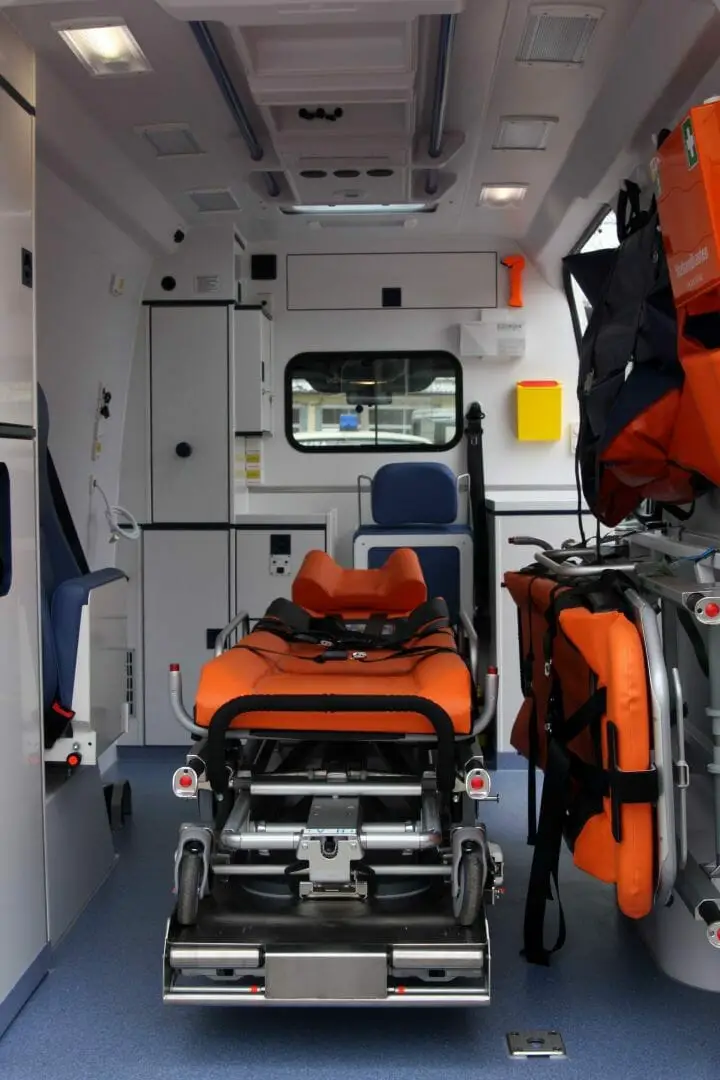When a close family member is an ailing senior, the chances are that you may have to move them cross-country or further for advanced medical care, changing their treatment center, or just so that they remain closer to you.
An elderly person can travel long distances comfortably if the right precaution and care are taken. Plan ahead for the most common senior travel needs and the issues that may arise, and you can sit back and relax.
We have compiled a list of tips for traveling with the elderly, what a caregiver needs to know while transporting an elderly, what mode of transport is most suited to transporting elderly people over long distances, and how to take their wheelchairs or other mobility devices along the way.
Contents
Important Considerations in Transporting Elderly Long Distance
Before further planning, jot down the most important factors that need to be taken into consideration while transporting an elderly or a disabled person over long distances. Important factors to consider include:
Health Condition of the Elderly
The most important criteria while transporting seniors over a long distance is their existing health condition. If they are able to sit for a few hours at a time, you can consider commercial airlines. But if the elderly person is bedridden, you might need to transport them by a dedicated road transport vehicle or even an air ambulance.
Travel and Transport Insurance
Does my insurance cover transportation for medical purposes?
Contact your insurance provider for information on long-distance transportation for medical purposes; they may be able to help you out with fixed amounts for medical transportation purposes.
Does my travel insurance plans offer full coverage for preexisting medical conditions and medical expenses? Does my travel insurance provider offer cancellation, if so, what kind of charges would be levied. These are important questions you need to be asking for before making the journey.
Do not leave insurance-related paperwork and verification until the last moment if you need to travel long-distance with or for an elderly person.
You may also like Best Places to Travel in a Wheelchair
Mode of Transport – By Air
If you want to transport a senior by air over a long distance,
A non-emergency medical air flight is useful for elderly patients who are not in extremely critical health conditions and needs to be moved from their home, senior care residence, or nursing home, to a specialized hospital for treatment or diagnosis.
If you are confused about what to consider while transporting an elderly patient through a non-emergency medical air flight, here are our suggestions:
Evaluate Physical Condition
Take into account their age, physical health, and restrictions. Provide complete details of the senior adult’s health- age-related diseases and mobility considerations should be declared so that the non-emergency medical air flight provider can prepare beforehand with adequate equipment and supplies.
Evaluate Mental Condition
If your elderly one is suffering from Alzheimer’s, dementia, and psychological issues you could arrange to accompany them on their journey in the non-emergency medical air flight.
These mental conditions may affect a person’s ability to comprehend the situation and react accordingly. They might panic at the unfamiliarity of their surroundings and it is wise to have a close family member accompany them.
Evaluate Airline
When transporting an elderly person across cities, you would want to fly with a good airline that takes care of the disabled. While opting for a non-emergency medical air flight service, take stock of their ratings and reviews, services they provide, and accommodations they offer.
some of the questions that you might need an answer to are:
- Does the airline meet special accommodation requests?
- Will the airlines provide assistance at the boarding gates, and at the security checkpoints?
- And finally, should I hire an air ambulance?
The service provider should be offering a variety of equipment, like transport wheelchairs at the air terminal, aisle chair inside the plane.
Additionally, they should also be able to offer help with food and lavatory needs while on the flight, taking into account the patient’s health condition, age.
Air Ambulance
You will need an air ambulance in the most extreme case, where the senior is sick or injured. Please speak to a medical professional before making such a decision. If you are hiring an air ambulance, you need to take care of the following:
- Explain current health conditions to all the personnel on the transport team and provide them with all medical condition details and emergency contact information.
- Evaluate and check the option of having a travel companion.
- Provide emotional and mental condition details, especially if the senior is suffering from a degenerative disease like Alzheimer’s, Parkinson’s or dementia.
- Review mobility issues and ensure access to the right mobility aids for the right time.
You may also like Best EMS Stair Chair
Mode of Transport – By Road
If you are transporting the elderly patient by road you need to take care of the following:
- Ensure proper seating arrangement for the elderly. Accessories like car seat cushions and car door latch grab bars can make a long journey a little more comfortable.
- Ensure that there’s adequate space for keeping the essentials, and mobility, and other medical equipment. If you are transporting a rollator walker or a cane, you might need to make extra room in the boot.
- Ensure that you factor in time for restroom breaks, lunch, etc. It is imperative that the elderly patient stretches their legs at regular intervals.
Other Examples of Transit:
- Paratransit (for those qualifying under the Americans with Disabilities Act)
- Uber/Lyft
- Special services dedicated to connecting elderly people with rideshare options (GoGoGrandparent)
- Local county public transportation options may be explored
Hire a Care Manager
A care manager is a professional who is skilled in transporting an elderly patient over long distances. A care manager coordinates services for both ends of the move and is well-acquainted with the local resources, medical centers, emergency services in case of need.
Hiring a care manager for moving an elderly parent or grandparent would give you the satisfaction that your elderly loved one is being efficiently taken care of by a professional.
A care manager can arrange movers and packers at both ends, set up new doctors, healthcare insurance, and attorneys for the elderly person, at his/her new destination.
Transporting Seniors by Road – Hire Specialty Medical Transport
A specialty medical transport bus, fully equipped with an oxygen tank, medical equipment, professionally trained nurses, and healthcare workers is a great way to efficiently move an elderly person across long distances.
This could cost you quite a bit of money, but always check the options available to you. Get quotes from multiple places and compare with respect to services offered, ratings, and total cost of travel. Also, check with your insurance provider to see if you have any claim options with respect to Specialty Medical Transport services.
You may also like How To Transfer A Parent From One Nursing Home To Another
What to Carry While Transporting an Elderly Person Over Long Distances?
Before you start to pack, make a list of all the things you need to carry.
Categorize the list into most necessary, often used, and prioritize accordingly. Pack these together in a compact bag and stow it close to you for easy access. Do not keep this bag in the trunk as you might find yourself reaching out to it too often to take pills and other essentials.
Must have items should include:
- Government Photo ID
- Government Health Insurance Card
- Medicines currently being used by senior adult
- List of medications- prescription, as well as over the counter
- Physical examination and medical records of the senior adult
- List of contacts and emergency numbers
- Light blanket and sweater
- Eyeglasses and dentures
How to Transport Mobility Devices Over Long Distances?
In the Trunk
If you are moving your elderly loved one by car, you can easily fold the wheelchair and stow it in the trunk or the back seat easily. Just ensure that there is enough room to keep your essentials bag and for the elderly patient to move back his/her seat in a reclining position.
Install a wheelchair carrier
If you do not have enough room – get an automatic wheelchair carrier that is simple to install and make it easy to get in and out of the mobility device smoothly.
An automatic wheelchair carrier can give you more freedom when it comes to personal transportation. Also, most of these wheelchair/ mobility scooter carriers offer more utility since they can be used for carrying other heavy-duty equipment as well.
You may also like Best Country For Elderly Care
What Factors to Consider Before Buying a Wheelchair Carrier
Weight Capacity
Ideally, buy a wheelchair carrier that has the capacity to carry at least 50% more weight than you’d be mounting onto it. This is to ensure that the carrier is still useful if the kind of wheelchair that you need to transport changes.
Type of Hitch
It is important that you consider the hitch type on your vehicle while shopping for a manual wheelchair carrier. Keep in mind what type of hitch type is suited for your vehicle.
If you opt for an automatic wheelchair carrier, you may have to add further heavy-duty springs/suspensions so that your vehicle can accommodate the additional load.
You might also like Best Pickup Truck Running Boards For Seniors
Type of Wheelchair Carrier
Basically, four kinds of wheelchair carriers are seen:
Car-Top Carrier that is automatic
Mounted to the roof of the vehicle, this carrier can be operated by a switch. An electric hoist extends out and lifts the wheelchair up, folding it as it rises.
This carrier can only accommodate manual chairs, it does not have the capacity to hold heavier weights.
Bumper-Mounted Carrier
Here too, this works only for manual wheelchairs. You have to manually fold and lift the wheelchair onto the carrier. Many vehicles have a molded bumper, in which case, an expert may need to drill holes into the bumper during the installation. The holes can be plugged if you decide you don’t need the carrier anymore. One disadvantage of the bumper-mounted type of carrier is that it also makes it harder to access the car’s trunk.
Hitch-Mounted Carrier
The hitch-mounted carrier tilts down to load the wheelchair and tilts up to lock into place. It can be attached to a drawbar or a ball mount on the back of your vehicle. Some of the carriers are manually operated, and some are automatic. Choose the one which fits your requirements and budget. In general, these Hitch mounted carriers are very popular because of their cost-effectiveness and overall performance.
Pick-Up Truck Carrier
The wheelchair is lifted into the bed of the truck by an electric-driven motor. The rack tilts and integrated ramp slides out for easy loading and unloading.
Fold the wheelchair manually and place it on the lift. For those who need additional help, caregiver assistance is recommended to use this style of carrier.
Ultimately, transporting an elderly patient across long distances can be managed smoothly with planning everything down to the last detail. Anticipating emergency services, packing essentials, deciding who should accompany the patient, and choosing what are services that you need to hire are all important factors, which, if executed well, can make the transition a whole lot smoother and hassle-free for you and your elderly loved one.




